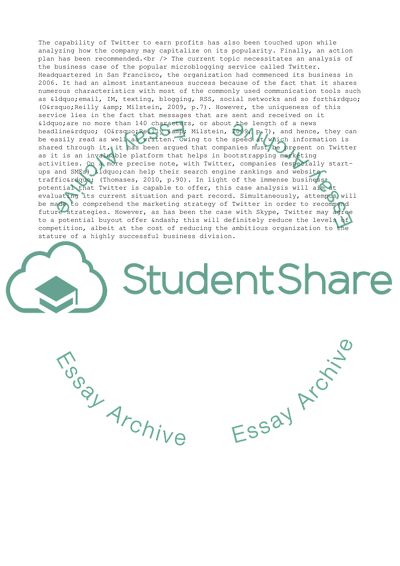Cite this document
(Entrepreneurs at Twitter Assignment Example | Topics and Well Written Essays - 2632 words, n.d.)
Entrepreneurs at Twitter Assignment Example | Topics and Well Written Essays - 2632 words. Retrieved from https://studentshare.org/business/1571518-entrepreneurs-at-twitter
Entrepreneurs at Twitter Assignment Example | Topics and Well Written Essays - 2632 words. Retrieved from https://studentshare.org/business/1571518-entrepreneurs-at-twitter
(Entrepreneurs at Twitter Assignment Example | Topics and Well Written Essays - 2632 Words)
Entrepreneurs at Twitter Assignment Example | Topics and Well Written Essays - 2632 Words. https://studentshare.org/business/1571518-entrepreneurs-at-twitter.
Entrepreneurs at Twitter Assignment Example | Topics and Well Written Essays - 2632 Words. https://studentshare.org/business/1571518-entrepreneurs-at-twitter.
“Entrepreneurs at Twitter Assignment Example | Topics and Well Written Essays - 2632 Words”, n.d. https://studentshare.org/business/1571518-entrepreneurs-at-twitter.


